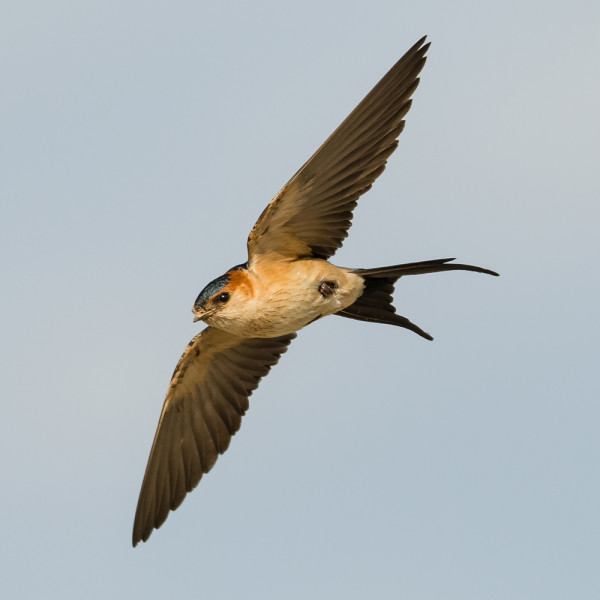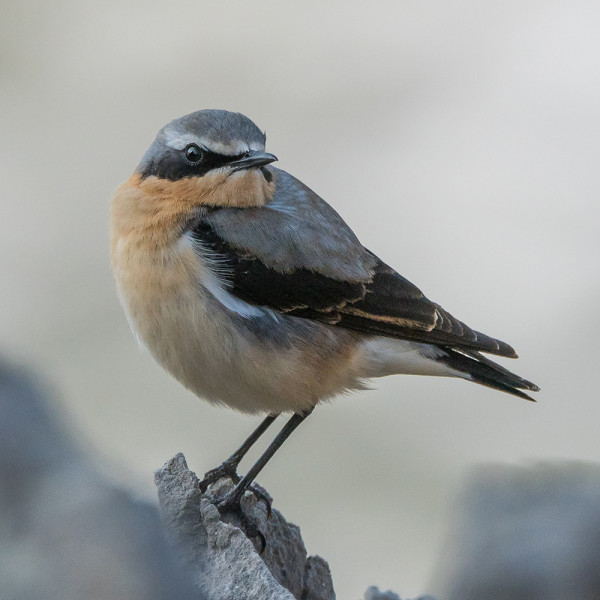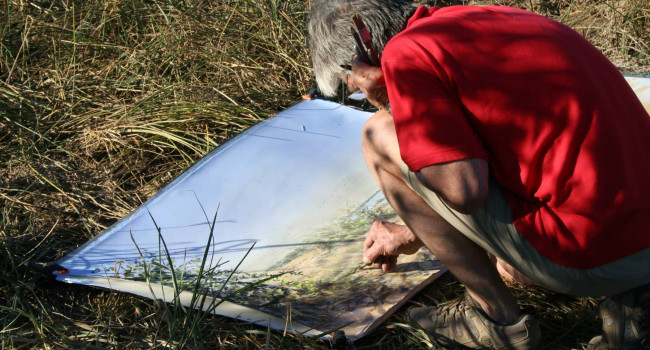
BirdTrack migration blog (21–27 April)
Scott’s role includes the day-to-day running of BirdTrack: updating the application, assisting county recorders by checking records and corresponding with observers.
Relates to projects
The almost constant easterly wind over the past week kept temperatures down and slowed the intensity of migration as birds remained further south, awaiting a break in the weather. This means that some species have yet to arrive en masse, but the last week did see a good arrival of others, including a long-awaited first for Britain – but more on that later!
Bar-tailed Godwits and Arctic Terns arrived in good numbers, despite the weather, with BirdTrack reporting rates showing a marked increase. These species both undertake some of the longest migrations of all animals, so they are used to moving in less-than-ideal conditions.
Bar-tailed Godwits will almost be in their full breeding plumage – their brick red feathering brightens up even the dullest of days, and is prized by many inland patch watchers who hope that one of these arctic breeders will stop off on their way north. This species is usually found at coastal locations, but in spring, birds often migrate overland in small flocks and can be found on the edges of inland water bodies.
Similarly, Arctic Terns regularly occur inland during spring migration. Small groups will migrate together and use a variety of lakes, reservoirs, and even wide rivers as stepping stones as they move through the country. If you live inland and miss out on these species in their coastal habitats, now is an excellent time to look out for them.
Another species that saw an upturn in reports was the Spotted Redshank. Once known as the Dusky Redshank owing to its black summer plumage, this elegant wader is a favourite for many a birdwatcher, and like Bar-tailed Godwit is a good wader to find inland. They typically favour reed-edged shallow pools and also often turn up in small flocks. Their “tchew-it” flight call is a good way of finding one, and the lack of white in the wing helps separate them from the commoner Redshank.
Identifying Spotted Redshank
Spotted Redshank can be tricky to distinguish from Redshank at this time of year. This photograph was taken in April.
Look for the longer, more slender bill, and longer legs. In flight, the feet project beyond the tail, and there are no white wingbars.
The call is also a useful identification feature:
Garganey also continued to be widely reported, whilst sightings of other ducks such as Wigeon and Pintail continued to fall away as they head to Fennoscandia and Iceland to breed.
The highlight of the spring, and probably the year so far, was a Black-winged Kite in Powys – a first for Britain.
The highlight of the spring, and probably the year so far, was a Black-winged Kite found in Powys on 18 April. Unfortunately, it was not refound after the initial sightings, and many will hope this first for Britain will be seen again in the coming days.
Other scarcities reported during the week include a few more Night Herons, a Gull-billed Tern in Cheshire, a Western Subalpine Warbler in Cork, and a Little Bittern in Devon.

Looking ahead
With an ever-changing forecast for the coming week, it is difficult to predict what species to look out for in the next few days.
At the moment, Saturday and the back end of next week look the most productive, with winds coming from a southerly direction. This is a change in the prevailing wind direction and could see a pulse of birds arriving, as those that were held up further south due to unfavourable weather move north.
Although the wind will not remain southerly for long, species such as Whitethroat, Pied Flycatcher, House Martin, Redstart, Whinchat, and Common Tern should start arriving in better numbers.
And don’t forget that southerlies at this time of year can result in a few species overshooting and turning up unexpectedly in the UK. These include Woodchat Shrike, Red-rumped Swallow, and Western Subalpine Warbler, so keep your eyes peeled!
During Sunday the wind direction shifts to the north as low pressure centred off Norway drags down colder arctic air. This will see a slowing in migration as birds are once again held back. However, the weather will be dry apart from the occasional shower, so some species will still turn up if the winds don’t get too strong.
This is a good time of year to look out for Wheatear, and to practice separating the two races which occur in Britain: Greenland and European.

This is a good time of year to look out for Wheatear, and to practice separating the two races which occur in Britain: Greenland race Wheatears, Oenanthe oenanthe leucorhoa, and European race Wheatears Oenanthe oenanthe oentanthe.
Greenland race Wheatears are slightly longer winged than their European race counterparts. This means they are better adapted to longer migrations and, despite arriving slightly later than birds of the European race, they will typically still arrive even if conditions aren’t conducive for other species.
While European Wheatears breed in the UK, Greenland Wheatears are only passing through; they continue on their spring migration north across the Atlantic to the arctic tundra in Greenland and northern Canada. They’re usually only seen in the UK in spring and autumn as they use the islands as a stopping point in their incredibly long migration between tropical Africa and their breeding grounds.
To identify the Greenland race birds, remember that they are stockier, and that the buff colouration on the throat and breast extends down towards the belly and thighs of the bird.
Add your records to BirdTrack
Don’t forget to let us know what you’ve found!
Adding your records to BirdTrack is quick and easy and gives us valuable information about bird migration.
Find out more








Share this page